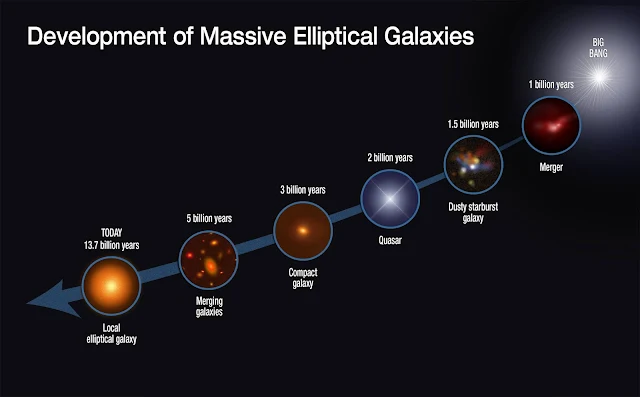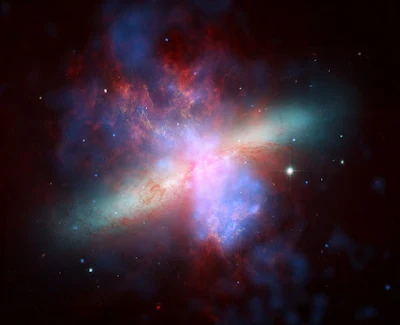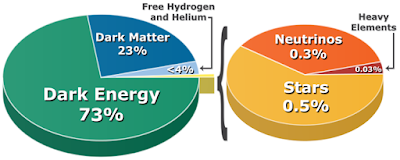Alfred
Nobel was a Swedish Chemist, Engineer and Industrialist most famously known
for the invention of dynamite. He died in 1896. In his will, he bequeathed all
of his "remaining realisable assets" to be used to establish five
prizes which became known as "Nobel Prizes". Nobel Prizes were first
awarded in 1901.
The prize ceremonies take place annually. Each recipient receives a gold medal, a diploma, and a monetary award. In 2020, the Nobel Prize monetary award is 10,000,000. A prize may not be shared among more than three individuals.
Three Laureates share this year’s Nobel Prize in Physics for their discoveries about one of the most exotic phenomena in the universe, the black hole. Roger Penrose showed that the general theory of relativity leads to the formation of black holes. Reinhard Genzel and Andrea Ghez discovered that an invisible and extremely heavy object governs the orbits of stars at the centre of our galaxy. A supermassive black hole is the only currently known explanation.
Roger Penrose used ingenious mathematical methods in his proof that
black holes are a direct consequence of Albert Einstein’s general theory of relativity. Einstein did not himself believe
that black holes really exist, these super-heavyweight monsters that capture
everything that enters them. Nothing can escape, not even light.
In January 1965, ten years after Einstein’s death, Roger Penrose proved that black holes really can form and described them in detail; at their heart, black holes hide a singularity in which all the known laws of nature cease. His groundbreaking article is still regarded as the most important contribution to the general theory of relativity since Einstein.
Sir Roger Penrose
Reinhard Genzel and Andrea Ghez each lead a group of astronomers that, since the early 1990s, has focused on a region called Sagittarius A* at the centre of our galaxy. The orbits of the brightest stars closest to the middle of the Milky Way have been mapped with increasing precision. The measurements of these two groups agree, with both finding an extremely heavy, invisible object that pulls on the jumble of stars, causing them to rush around at dizzying speeds. Around four million solar masses are packed together in a region no larger than our solar system.
Using the world’s largest telescopes, Genzel and Ghez developed methods to see through the huge clouds of interstellar gas and dust to the centre of the Milky Way. Stretching the limits of technology, they refined new techniques to compensate for distortions caused by the Earth’s atmosphere, building unique instruments and committing themselves to long-term research. Their pioneering work has given us the most convincing evidence yet of a supermassive black hole at the centre of the Milky Way.
Andrea Mia Ghez
Reinhard Genzel
Reinhard Genzel is a German Astrophysicist, Co-director of the Max Planck Institute for Extraterrestrial Physics, a Professor at LMU and an Emeritus Professor at the University of California, Berkeley. He was awarded the 2020 Nobel Prize in Physics "for the discovery of a supermassive compact object at the centre of our galaxy", which he shared with Andrea Ghez and Roger Penrose. Reinhard Genzel studies infrared- and submillimeter astronomy. He and his group are active in developing ground- and space-based instruments for astronomy. They used these to track the motions of stars at the centre of the Milky Way, around Sagittarius A*, and show that they were orbiting a very massive object, now known to be a black hole. Genzel is also active in studies of the formation and evolution of galaxies.
Black Hole
Black hole is a region of spacetime where gravity is so strong that nothing—no particles or even electromagnetic radiation such as light—can escape from it. The theory of general relativity predicts that a sufficiently compact mass can deform spacetime to form a black hole.
The boundary of the region from which no escape is possible is called the event horizon. Although the event horizon has an enormous effect on the fate and circumstances of an object crossing it, according to general relativity it has no locally detectable features. In many ways, a black hole acts like an ideal black body, as it reflects no light. Moreover, quantum field theory in curved spacetime predicts that event horizons emit Hawking radiation, with the same spectrum as a black body of a temperature inversely proportional to its mass. This temperature is on the order of billionths of a kelvin for black holes of stellar mass, making it essentially impossible to observe directly.
Albert Einstein
Amal Kumar Raychaudhuri
Amal Kumar Raychaudhuri was an Indian Physicist, known for his research in general relativity and cosmology. His most significant contribution is the eponymous Raychaudhuri equation, which demonstrates that singularities arise inevitably in general relativity and is a key ingredient in the proofs of the Penrose–Hawking singularity theorems.
Raychaudhuri
was also revered as a teacher during his tenure at Presidency College, Kolkata.
Many of his students have gone on to become established Scientists.
Stephen William Hawking
General Relativity:
General relativity, also known as the general theory of relativity, is the geometric theory of gravitation published by Albert Einstein in 1915 and is the current description of gravitation in modern physics. General relativity generalizes special relativity and refines Newton's law of universal gravitation, providing a unified description of gravity as a geometric property of space and time or four-dimensional spacetime. In particular, the curvature of spacetime is directly related to the energy and momentum of whatever matter and radiation are present. The relation is specified by the Einstein field equations, a system of partial differential equations.
Some predictions of general relativity differ significantly from those of classical physics, especially concerning the passage of time, the geometry of space, the motion of bodies in free fall, and the propagation of light. Examples of such differences include gravitational time dilation, gravitational lensing, the gravitational redshift of light, the gravitational time delay and singularities/black holes.
Einstein's theory has important astrophysical implications. For example, it implies the existence of black holes—regions of space in which space and time are distorted in such a way that nothing, not even light, can escape—as an end-state for massive stars. There is ample evidence that the intense radiation emitted by certain kinds of astronomical objects is due to black holes. For example, micro quasars and active galactic nuclei result from the presence of stellar black holes and supermassive black holes, respectively.
Reference:
·
NEWS:-THE HINDU
· JOURNALS
Submitted by
Savitha M S
Shraddha G S
Srinidhi P
Srivaths B
Shubhalakshmi














































